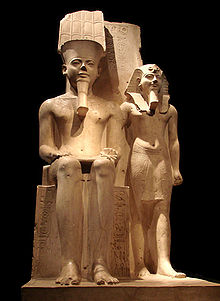 The mythical Wodan, or more commonly known today as Odin; is said to be in legend the first “unofficial” founder king of Danmark (Denmark) who had reigned before Christ (B.C.) 1040, which was the 8th year of the reign of David, King of Israel. When I say that he was the unofficial founder king, I mean that he is not currently recognized as the “founder and king” of the current ruling Danish monarchy. The Danish monarchy today trace their lineage back to the Viking kings Gorm the Old and Harald Bluetooth from the 10th century; making the monarchy of Denmark the oldest in Europe.
The mythical Wodan, or more commonly known today as Odin; is said to be in legend the first “unofficial” founder king of Danmark (Denmark) who had reigned before Christ (B.C.) 1040, which was the 8th year of the reign of David, King of Israel. When I say that he was the unofficial founder king, I mean that he is not currently recognized as the “founder and king” of the current ruling Danish monarchy. The Danish monarchy today trace their lineage back to the Viking kings Gorm the Old and Harald Bluetooth from the 10th century; making the monarchy of Denmark the oldest in Europe.
The purpose of this article is not to validate or invalidate the current Danish monarchy, but to place a light on the hidden history of the founding of Denmark and its founder kings long before the 10th century A.D. Viking kings had come onto the world stage. In order to do this, we must go back approximately another 2,000 years in a time when the Pharaohs had ruled Egypt on the other side of the world.
The mythical King Dan I in legend is the founder of Denmark. However, his real name was not Wodan, Odin 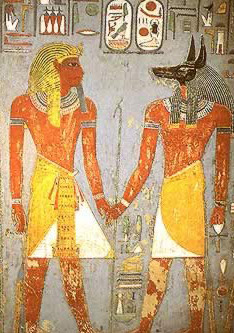 or even King Dan I. These names are actually titles or assumed names that are derived from the Hebrew word Adonai (אֲדֹנָי) “my lords,” from adon “lord, owner or master.” The singular form is Adoni, “my lord”. This was used by the Phoenicians for the god Tammuz and is the origin of the Greek name Adonis. Jews only use the singular to refer to a distinguished person. The plural form is usually explained as pluralis excellentiae. The pronunciation of the tetragrammaton came to be avoided in the Hellenistic period, therefore Jews use “Adonai” instead in prayers, and colloquially would use Hashem (“the Name”).
or even King Dan I. These names are actually titles or assumed names that are derived from the Hebrew word Adonai (אֲדֹנָי) “my lords,” from adon “lord, owner or master.” The singular form is Adoni, “my lord”. This was used by the Phoenicians for the god Tammuz and is the origin of the Greek name Adonis. Jews only use the singular to refer to a distinguished person. The plural form is usually explained as pluralis excellentiae. The pronunciation of the tetragrammaton came to be avoided in the Hellenistic period, therefore Jews use “Adonai” instead in prayers, and colloquially would use Hashem (“the Name”).
Adonai, the name for both Deity and to man is used approximately 449 times in the Old Testament and 315 times in conjunction with Yahweh. The name “Dan” is short for Wodan/Odin whose names are title’s that originate from Adonai with the Greek version being the singular “Adoni.” Jews only use the singular in Adonai to refer to a distinguished person such as we find in the Anglos-Saxon Wodan or Norse Odin. Hence, for the name of the lord; the Jews use Adonai, the Greeks use Adoni, and the Norse Odin and Anglo-Saxons Wodan.
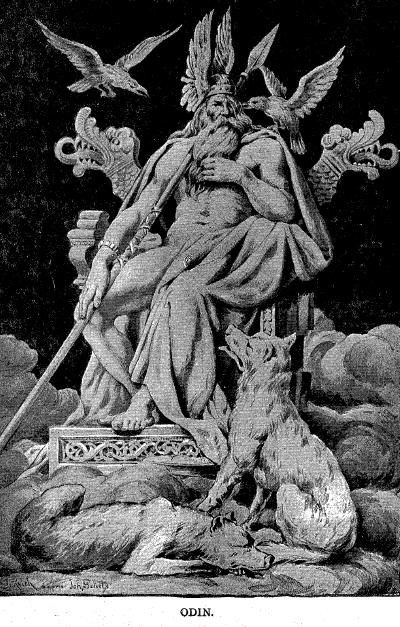 Similar names that mean the same thing as Adonai or Adoni you will find under such spellings as: God, Od, Gott, Goth, Gothin, Wodan, Woden, Odin, (Gododin), Edin, Eden, Edon, Ed, Weden, Wedne, Aden, Adon, Aton or Aten, Gaden, Dan, Titan, Danaus, Dianus^ Ianus, Adonis, Poseidon, Cot, Cotta, Khoda, Chudai. Gaid (Gaid-El), Gad, Ad, Adad, Cuth, Cush, Gath, Ath, Aith, Guth, Gud, Gude, Gudan, Guodan, Othin, Oth, Ouvin, On, Oud, Weda, Gautama, Pagod, Bod, Bud. Buth, Budh, Budha, Budhu, Boodh, Bhood, Buddin, Boutta, Poota, Poth, Pot, Fo, Foo, Fohi. Today in the occult and in Freemasonry, the most common use is under the Hebrew spelling of Adonai, and why in masonic lodges their is always a Grand Adonai; AKA Grand Master presiding over lodge activities.
Similar names that mean the same thing as Adonai or Adoni you will find under such spellings as: God, Od, Gott, Goth, Gothin, Wodan, Woden, Odin, (Gododin), Edin, Eden, Edon, Ed, Weden, Wedne, Aden, Adon, Aton or Aten, Gaden, Dan, Titan, Danaus, Dianus^ Ianus, Adonis, Poseidon, Cot, Cotta, Khoda, Chudai. Gaid (Gaid-El), Gad, Ad, Adad, Cuth, Cush, Gath, Ath, Aith, Guth, Gud, Gude, Gudan, Guodan, Othin, Oth, Ouvin, On, Oud, Weda, Gautama, Pagod, Bod, Bud. Buth, Budh, Budha, Budhu, Boodh, Bhood, Buddin, Boutta, Poota, Poth, Pot, Fo, Foo, Fohi. Today in the occult and in Freemasonry, the most common use is under the Hebrew spelling of Adonai, and why in masonic lodges their is always a Grand Adonai; AKA Grand Master presiding over lodge activities.
The first Odin (Wodan) who all other Odins would be named after was also known by other names such as King Tanaus (Tanausts); king of Scythia, and in Latin as King Danus I, or more commonly today in English as King Dan I. Tanausis was a legendary king of the Goths, according to Jordanes‘s Getica (5.47). The 19th century scholar A. Von Gutschmid assigned his reign to 1323 BC – 1290 BC. These dates coincide exactly with that of King Dan I and a Greek Pharaoh whom I will name below that tie them all together as one. In addition to these facts; just as Odin and King Dan I were worshiped as Gods, so too was King Tanaus worshiped as a God after his Death.
As I stated above, the names “Danus or Dan” is short for Wodan or Odin which are all derived from the same sources in Hebrew Adonai and or Greek Adnonis. You will find the name of the tribe of King Dan I’s descendants who were given to us in Homer’s Iliad as the “Danaans” or “tribe of Danaë,” grandchildren of Belus (Phoenician ‘Baal’) who gave their name to the “Argives.” All the kings of Denmark, Norwegian, Swedish and Anglo-Saxons and even the first president of the United States, George Washington claim descent from this blood line.
Could King Dan I actually be the Pharaoh King Harmais, or quite possibly the biblical Moses who led his 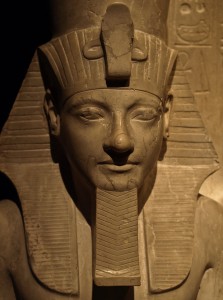 people from Egypt?
people from Egypt?
Another name for Wodan/Odin or King Dan comes to us from the East. However, this name is not Norse or English, but an Egyptian name. This other name I have connected to King Dan I and Odin is no other than Pharaoh Horemheb (Horemhab or Haremhab – meaning Horus is in Jubilation). Before he became pharaoh, Horemheb was the commander and chief of the army under the reigns of Tutankamun and Ay. The 3.6 m large naophorous statue of Horemheb (Harmais) Cairo CG 1230 was found at Naukratis, the only Greek city in Egypt before Alexander.
Horemheb, son of Krits and Smithis, explicitly calls himself a ‘Greek’ (hiw-nbw.t again).
After the Greek Horemheb’s accession to the Egyptian throne, he reformed the state and it was under his reign that official action against the preceding Amarna rulers began. Horemheb demolished monuments of Akhenaten, reusing their remains in his own building projects, and usurped monuments of Tutankhamun and Ay. Upon his accession, Horemheb initiated a comprehensive series of internal transformations to the power structures of Akhenaten‘s reign, due to the preceding transfer of state power from Amen’s priests to Akhenaten’s government officials. Horemheb “appointed judges and regional tribunes…reintroduced local religious authorities” and divided legal power “between Upper Egypt and Lower Egypt” between “the Viziers of Thebes and Memphis respectively.”
 Horemheb; AKA King Dan I was the last Pharaoh of the 18th Dynasty from either 1319 BC to late 1292 BC, or 1306 to late 1292 BC (if he ruled for 14 years). The two of the attested Greek names for the Egyptian name of Horemheb are Αρμαις (H/Arma-is or Harmais) and Αρμαιος (H/Armai-os or Hormose). I have found that the names of Harmais or Hormose to be very similar to Moses and it was Moses who led his peoples in the exodus from Egypt that is well attested for in the bible.
Horemheb; AKA King Dan I was the last Pharaoh of the 18th Dynasty from either 1319 BC to late 1292 BC, or 1306 to late 1292 BC (if he ruled for 14 years). The two of the attested Greek names for the Egyptian name of Horemheb are Αρμαις (H/Arma-is or Harmais) and Αρμαιος (H/Armai-os or Hormose). I have found that the names of Harmais or Hormose to be very similar to Moses and it was Moses who led his peoples in the exodus from Egypt that is well attested for in the bible.
Adonai said to Moses, “Go back and warn the people not to cross the boundary line to see the Divine, because they will die. 22 Even the priests, who usually come near Adonai, must sanctify themselves, or else Adonai will destroy them.
Just as the biblical Moses had done in leading his peoples, Harmais had also led an exodus of his peoples out of Egypt. Could there have been two Exoduses out of Egypt or are these stories just one in the same. One being told allegorically; such as the Biblical accounts given to us in order to conceal the truth lying beneath the surface, and the other story we find being an almost exact told in Egypt that can be verified.
He may also just be the unofficial founder of Denmark and is also said to be King of the Scythians during the reign of Sesostris (Sethos or Ramses I), King of Egypt. Sesostris was the name of a legendary king of ancient Egypt who led a military expedition into parts of Europe, as related by Herodotus. Tradition tells us that Odin (King Dan I) led the Asi (Goths) from the confines of Asia to Northern Europe. It appears that all these names are invented and allegorical and thus adding to the confusion for us researchers looking for the truth.
There are other great historians who have given us historical accounts of this mysterious King Dan I. These facts come down to us from Josephus and Eusebius, in which we can also cross reference their versions of this story with Egyptian monuments and also the bible that make them come to life. I have found that in using these sources, it affirms that there was in fact an Egyptian Harmais (Armais or Haremhab) who was also called Danaus and Sethosis (Ramses I or called Sett by Josephus). Manetho also states that Sethos was called Egyptos and his brother Horemheb/Harmais was called Danaos.
All of these different ancient accounts, allegories and legends place layers upon the true story which lies deep below the surface; that which we researchers must NOT take literally or as fact, but as clues to the real story which is always concealed in legend and allegory on purpose from the profane. Hence, their is a reason for the confusion and a method to the chaos they create when attempting to make sense of this history.
According to Herodotus, Sesostris was succeeded by Pheron, and Pheron by Proteus, in whose reign Troy was taken; and according to Manetho, Sesothis was succeeded by Ramses, and Ramses by Ramesses, in whose reign Troy was taken, according to Pliny. Therefore Sesothis and Sesostris were the same; and his accession could not have been much earlier than 1283, or a century before the destruction of Troy; reckoning three reigns equivalent to three mean generations.
This time frame also coincides with that of Pharaoh Horemheb’s reign that I had stated above of 1319 BC to late 1292 BC, or 1306 to late 1292 BC (if he ruled for 14 years). In addition they also match the almost exact dates for King Tanaus who was a legendary king of the Goths who the 19th century scholar A. Von Gutschmid assigned his reign to 1323 BC – 1290 BC. These dates coincide exactly with that of King Dan I and the Greek Pharaoh Horemheb’s reign whom just like Odin and King Dan I were worshiped as Gods after their Death. This is evidence for us to connect the truth hidden inside the stories that are all essentially one in the same that have been passed down to us by Josephus, Eusebius, Herdotus and Pliny.
In the story passed down by these historians; Sesostris (Horemheb), having during his own war-expeditions to foreign lands placed his brother Harmais (Danaus) as regent, or viceroy in Egypt. While Sesostris was on expedition, his brother Horemheb or Harmais (Danaus) had conspired to destroy Sesostris and all his family in order to take the throne. Upon Sesostris learning of the plot and on his return to Egypt, he then expelled his brother Harmais (Danaus) from Egyptian lands. Harmais (Danaus) then led an exodus out of Egypt to Argos and founded there the Danaid Dynasty or more commonly known as the Tribe of Dan, which succeeded that of Inachos.
However Horemheb (Harmais) who called himself Greek and who seized the throne from a brother named Ramesses or Sethos is the “legend” and I have found that the truth may actually be that Harmais, Ramesses and Sethos are all one in the same person, or that Horemheb (Harmais) had actually usurped the throne of his brother Sethos to then become the forefather of a new Egyptian era under a new name of Ramesses and family that would become the eighteenth dynasty.
My intuition tells me that this story was told in this fashion to relate how the power that was once only held in Egypt, was now also transferred to the Greeks in Argos where they had founded the Danaid Dynasty. This which essentially was an extension of their rule, that now extended from Egypt to Greece and the new lands of Europe; which would be the new frontier for their future kingdoms that we can see today.
This Greek, Denmark and Egyptian connection with Harmais (Armais or Haremhab) or who we now call Seti or Suti I can all be verified in the Nineteenth (XIX) Dynasty of ancient Egypt. When Tutankhamun died while still a teenager, Horemheb had already been officially designated as the rpat or iry-pat (basically the “Hereditary or Crown Prince”) and idnw (“Deputy of the King” in the entire land) by the child pharaoh; these titles are found inscribed in Horemheb’s then private Memphite tomb at Saqqara which dates to the reign of Tutankhamun
Seti or Suti I was the forefather of the 19th dynasty which was one of the periods of the Egyptian New Kingdom. He was from a military family in the Delta and a prominent general during the late 18th dynasty (14th century BCE) under Pharaoh Amenhotep IV who was placed in charge with the oversight of the Delta and is later mentioned as vizier on monuments of his son, Pharaoh Ramesses I who reigned for a very short time (1318–1317) but gave his name to one of the most illustrious families in history, the Ramessides. He was followed by Seti I (1317–1301).
Ramesses I was also the High Priest of Amun and played an important role in the restoration of the old religion following the Amarna heresy of a generation earlier under Akhenaten. Horemheb demolished monuments of Akhenaten, reusing their remains in his own building projects, and usurped monuments of Tutankhamun and Ay. Horemheb presumably remained childless since he appointed his vizier Paramesse as his successor, who would assume the throne as Ramesses I.
This is also a very important fact to keep in mind when understanding that this was not only a “New Kingdom” founded by an “army general” who was from the “Hyksos region,” but also the major other factors being the “restoration of the old religion of Amun or Amon and Amon-priesthood” indirect in its “opposition to the Aton-faith.” This must have been one of the most tumultuous times in Egyptian royalty and history, but also quite possibly the most important religious event in all of written history.
The few monuments of Ramses I proclaimed himself king of Nubia and Southern Egypt, as his brother Haremhab did in Northern Egypt, and that the two brothers divided the power between them. It is also possible, as Josephus avers, that Ramses (called Sett by Josephus) was the chief administrator of the two, and that he, when Haremhab usurped all the royal prerogatives, marched against his brother with his army and expelled him from Egypt. This would then have happened in 1322/1 B. c. Ramses I, being the older of the two brothers, died, therefore, after a reign of 1 year, 4 months, i. e., in the first months of 1320 B. c.
These stories coincide with the Greek myths of the Kings of the Danaoi, or Danaans who had all claimed descent from King Danus; who also had led a migration from Egypt (Israel) to Greece. The beginning of Greek history is often dated to this “exile” from Egypt of the Danaoi, who appear in classical writings as the “Danaans.” You will also find them under other spellings such as the Danaoi (Danaoi used 138 times in the Iliad), Danaus, Danae, Danaans, Danoi, Danaids,or Dananites.
These facts are paramount in understanding the Denmark and Egyptian connection with King Dan I and more importantly, the split in kingdoms forcing the expelled King Dan I to flee to Argos where he had founded the Danaid Dynasty or the Dananites, Tribe of Dan. This is no myth because Harmais who is Haremhab or King Dan I is written in stone on Egyptian monuments, which confirm these stories of Josephus and Eusebius that can now rest on a historical fact based on these Egyptian inscriptions that have now been deciphered.
The Greek Egyptian Pharaoh Haremhab or Harmais who is also King Dan I would forever be immortalized under the Jewish Adonai, Anglo-Saxon Wodan or the Norse Odin. Pharaoh Haremhab was the Adonai (אֲדֹנָי) of the Amun Priesthood and founding king of the mythical Scythians, Tribe of Dan and the Scandanavian countries such as Dan-mark or Denmark. Having subdued the country, King Dan I (Pharaoh Haremhab) became lord and master of that land under the title of Wodan/Odin and whose descendants would also take this name to later go on to conquer Sweden, Norway, Gaul, Ireland, Scotland, England and Britain. From this point on, this great king would forever be immortalized by the Vikings as Odin or the Anglo Saxons as Wodan and worshiped as a God. The descendants of King Dan I (Odin); the Tribe of Dan, would go on for several centuries founding many new countries in the western world that still rule to this very day.

Moe is the founder of GnosticWarrior.com. He is a father, husband, author, martial arts black belt, and an expert in Gnosticism, the occult, and esotericism.


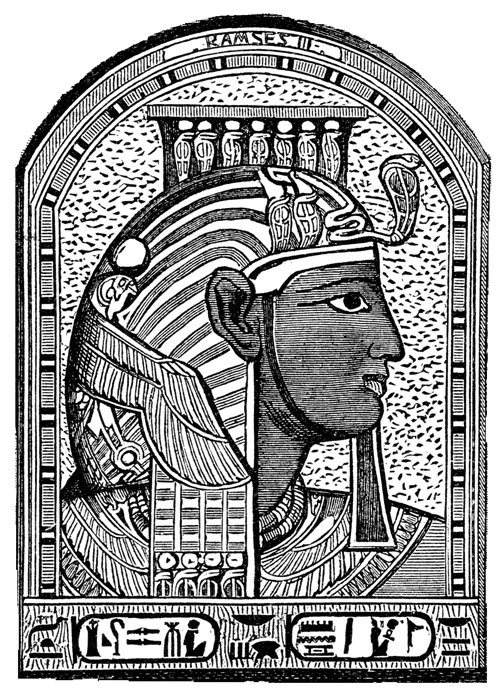
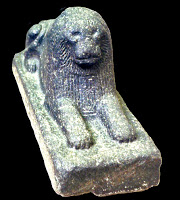
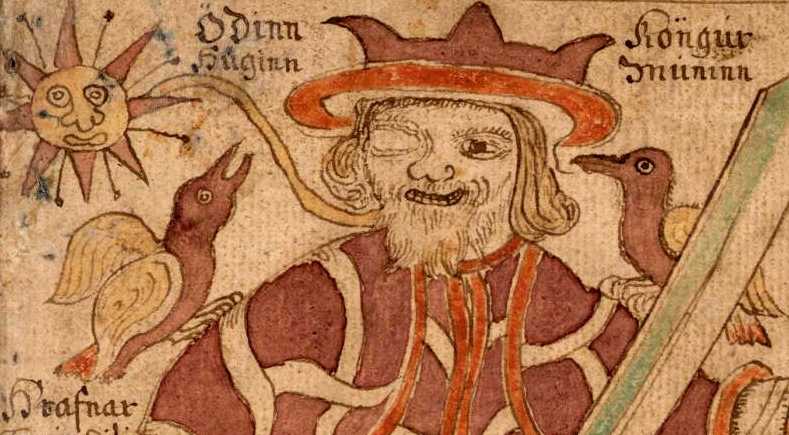
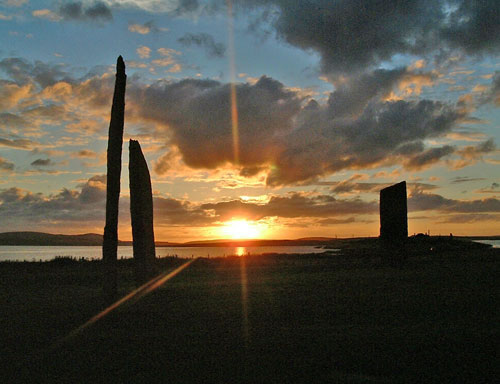

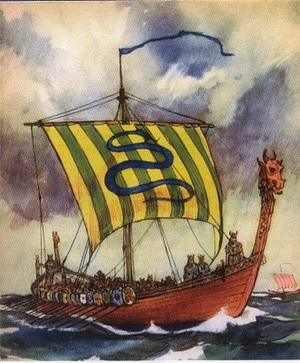
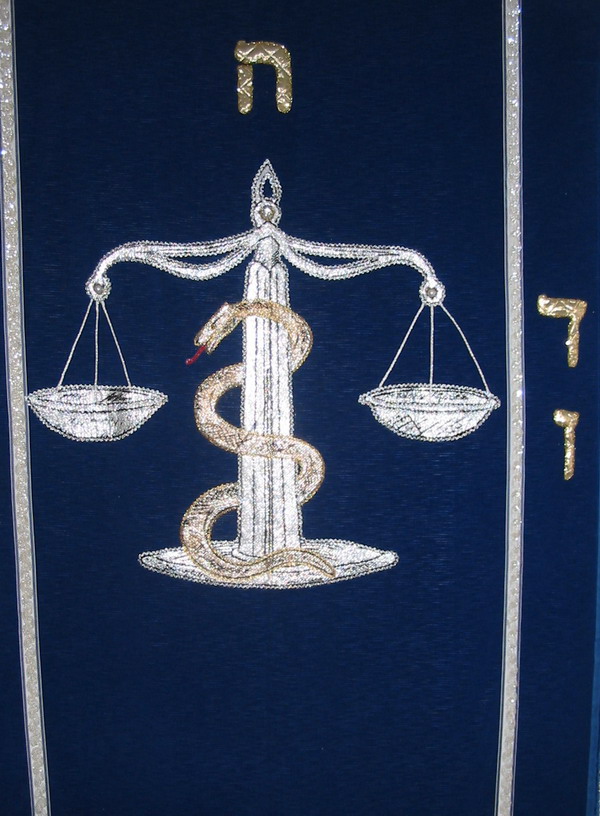
https://fabpedigree.com/s070/f501233.htm ab-original or “real” people from the Piuda Gothic [Gothedlic / Godelic / Goidelic / Quoidelic], of the Western Atlantic sea coast of Aremorica,
Why did you leave out Idunn, Athena, Danu (Celtic and Hindu goddess), Danaë (mother of Perseus) and Dôn (Welsh)?
Are you sure it was Haremhab! and not AdonAy?
The Danish monarchy are as much related to their Viking kings, as the Nowegian royal family are related to our Viking kings. In other words: not related at all. Love from Norway.
Greetings from the Masonic States of America. Then who are they related to?
Greetings from the Masonic States of America. Then who are they related to? The Greeks?